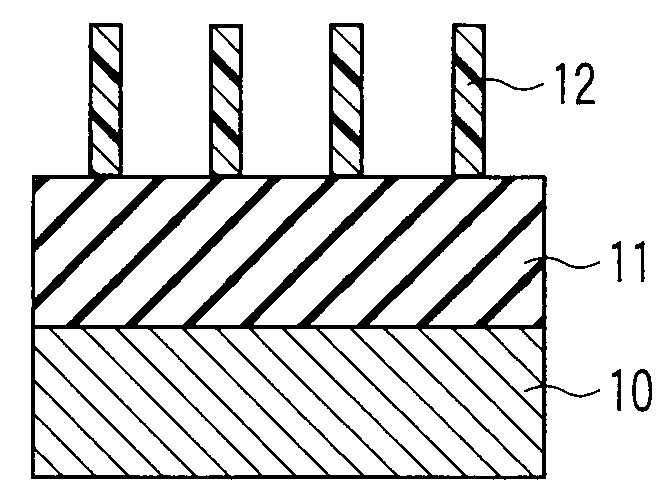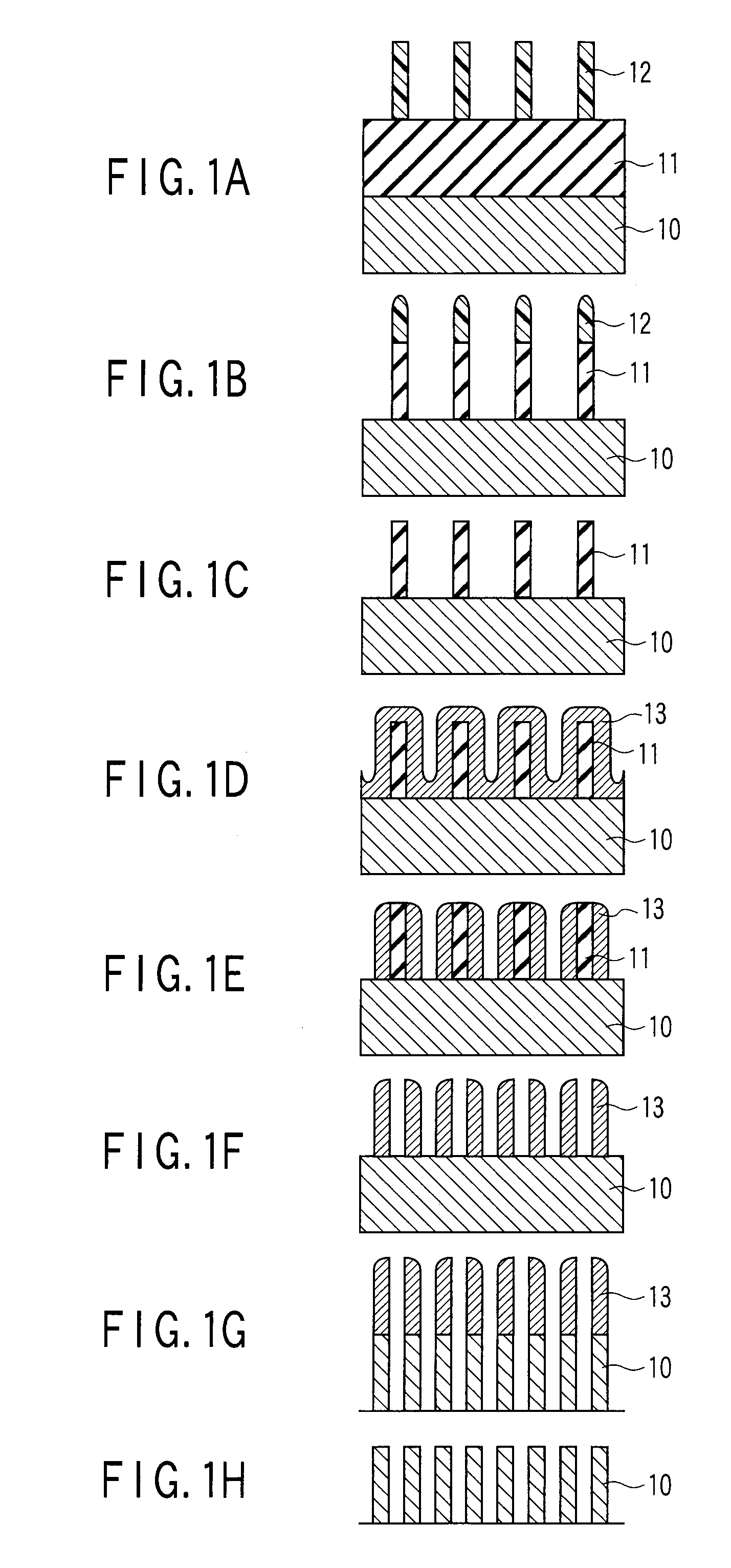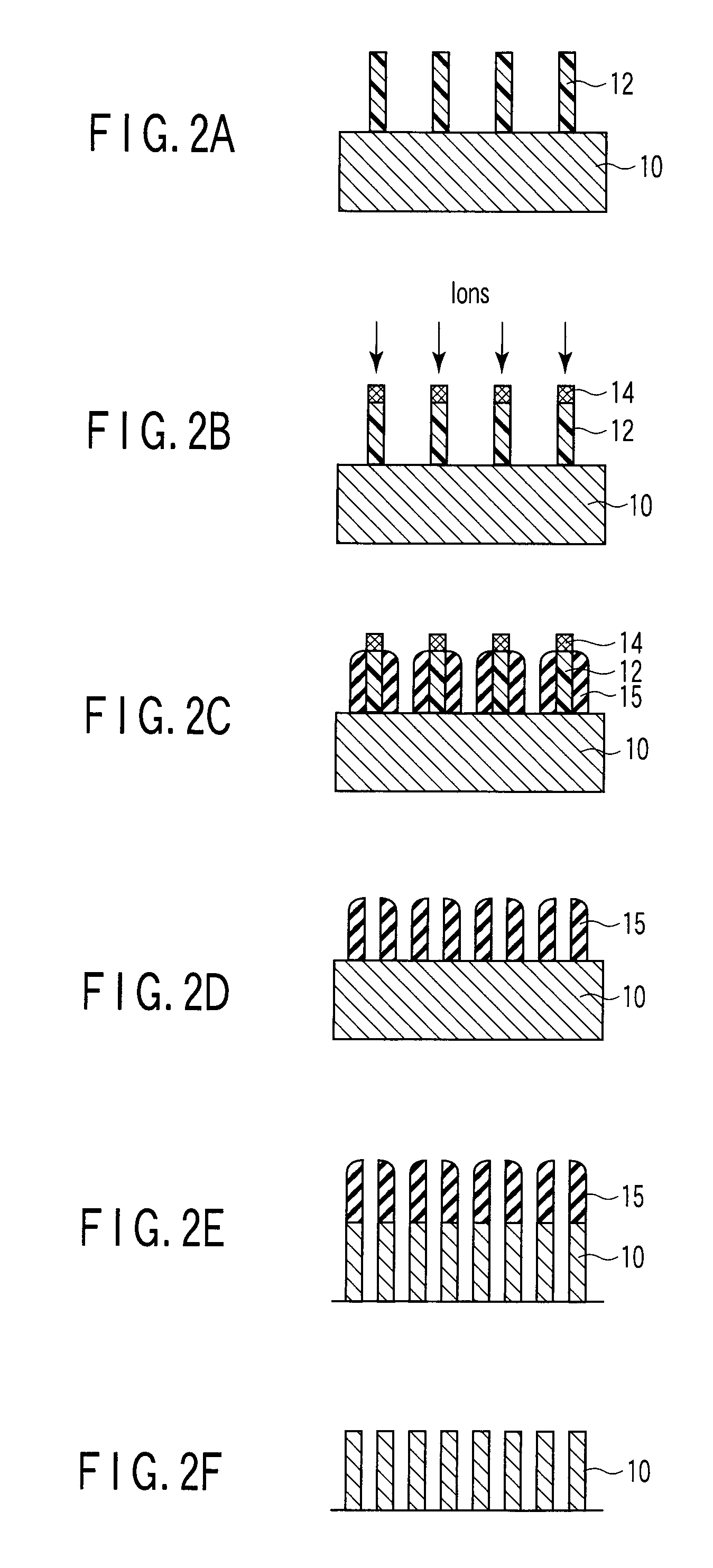Pattern forming method using relacs process
a technology of relacs and pattern forming, which is applied in the direction of photomechanical treatment, instruments, photomechanical apparatus, etc., can solve the problem of difficult to remove resis
- Summary
- Abstract
- Description
- Claims
- Application Information
AI Technical Summary
Benefits of technology
Problems solved by technology
Method used
Image
Examples
first embodiment
[0014]A pattern forming method according to the first embodiment of the present invention will be described with reference to FIGS. 2A to 2F.
[0015]In this embodiment, a sidewall pattern is formed using RELACS. Additionally, ions are implanted in advance to prevent a RELACS film from remaining on the upper surface of a resist pattern, thereby deactivating the acid in the resist.
[0016]As a comparison to this embodiment, a conventional spacer process will be described first with reference to FIGS. 1A to 1H. In the conventional spacer process, as shown in FIG. 1A, an oxide film 11 such as a TEOS film is formed on a to-be-processed film 10 made of, e.g., silicon (Si), polysilicon (poly-Si), an oxide film, or tungsten (W). A resist pattern 12 is formed on the oxide film 11.
[0017]At this time, a desired resist pattern 12 may directly be formed by exposure. Alternatively, the resist pattern 12 may be formed by slimming. In this case, a resist pattern 12, of which line width is wider than th...
second embodiment
[0059]A pattern forming method according to the second embodiment of the present invention will be described with reference to FIGS. 2A to 2F and FIGS. 5A to 5F.
[0060]In the first embodiment, the explanation has been made assuming that only a cell portion is formed. However, if the cell portion and the peripheral circuit portion are formed separately, the manufacturing cost increases. In the second embodiment, a method of forming the peripheral circuit portion and the cell portion simultaneously will be described. It is therefore possible to execute the following steps of forming the peripheral circuit portion simultaneously in parallel to the steps described in the first embodiment.
[0061]FIGS. 5A to 5F are sectional views showing the steps in manufacturing a peripheral circuit portion. The steps in FIGS. 5A to 5F correspond to the steps in FIGS. 2A to 2F, respectively. The corresponding steps are executed simultaneously.
[0062]As shown in FIG. SA, in the first resist patterning step...
PUM
| Property | Measurement | Unit |
|---|---|---|
| thickness | aaaaa | aaaaa |
| vapor pressure | aaaaa | aaaaa |
| solvent resistance | aaaaa | aaaaa |
Abstract
Description
Claims
Application Information
 Login to View More
Login to View More - R&D
- Intellectual Property
- Life Sciences
- Materials
- Tech Scout
- Unparalleled Data Quality
- Higher Quality Content
- 60% Fewer Hallucinations
Browse by: Latest US Patents, China's latest patents, Technical Efficacy Thesaurus, Application Domain, Technology Topic, Popular Technical Reports.
© 2025 PatSnap. All rights reserved.Legal|Privacy policy|Modern Slavery Act Transparency Statement|Sitemap|About US| Contact US: help@patsnap.com



